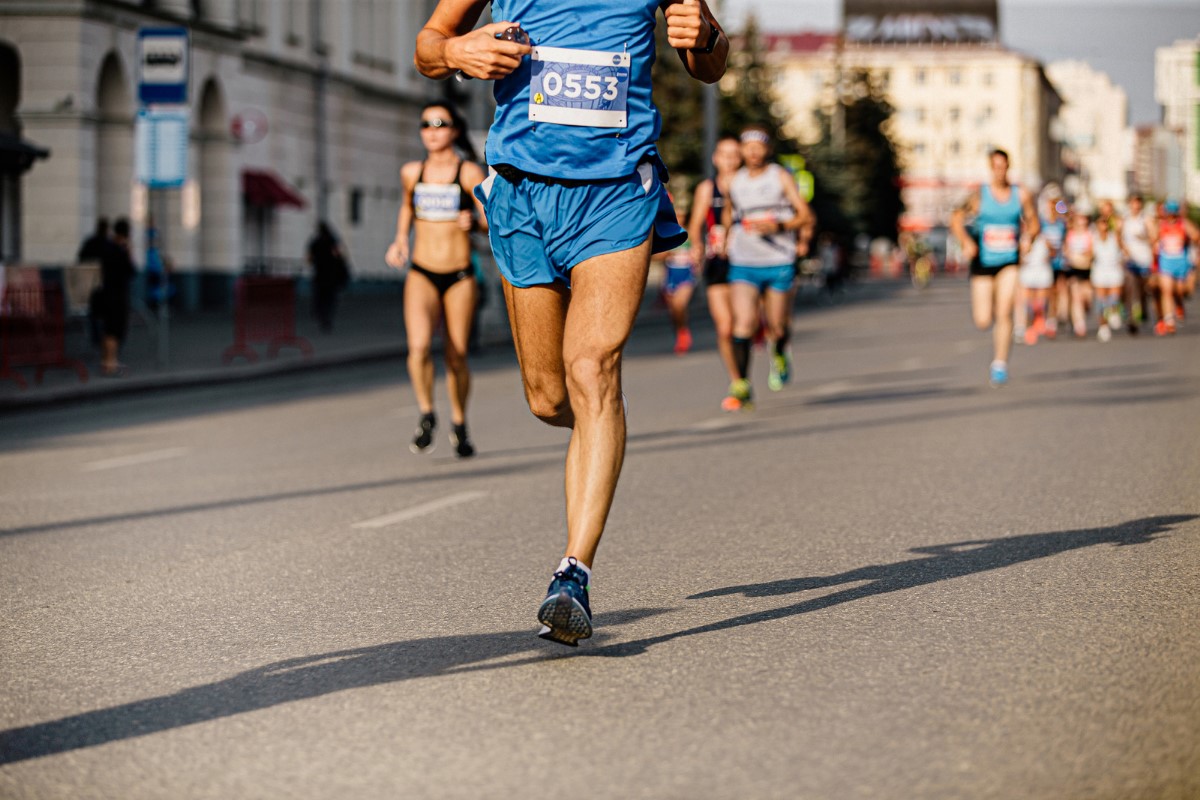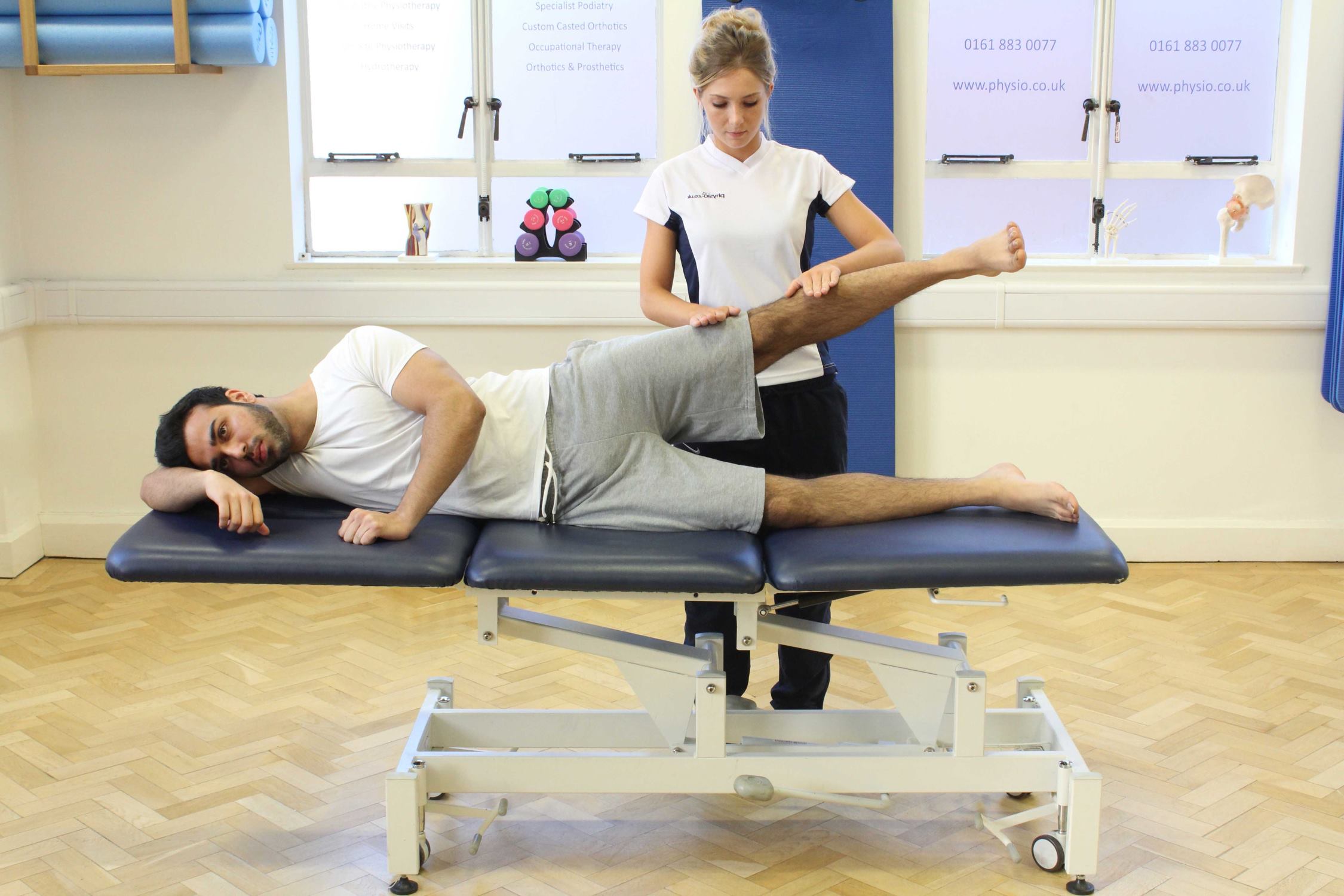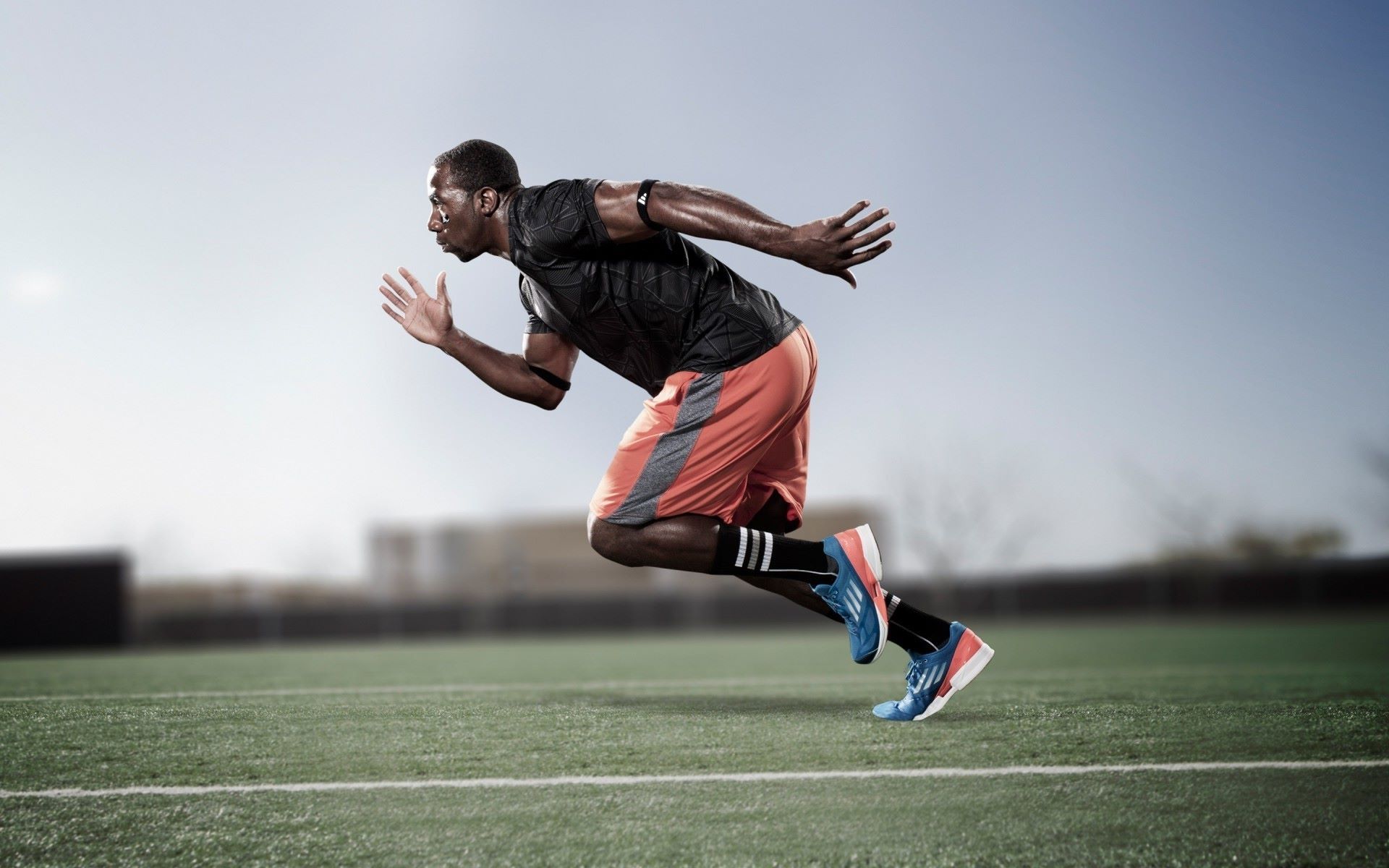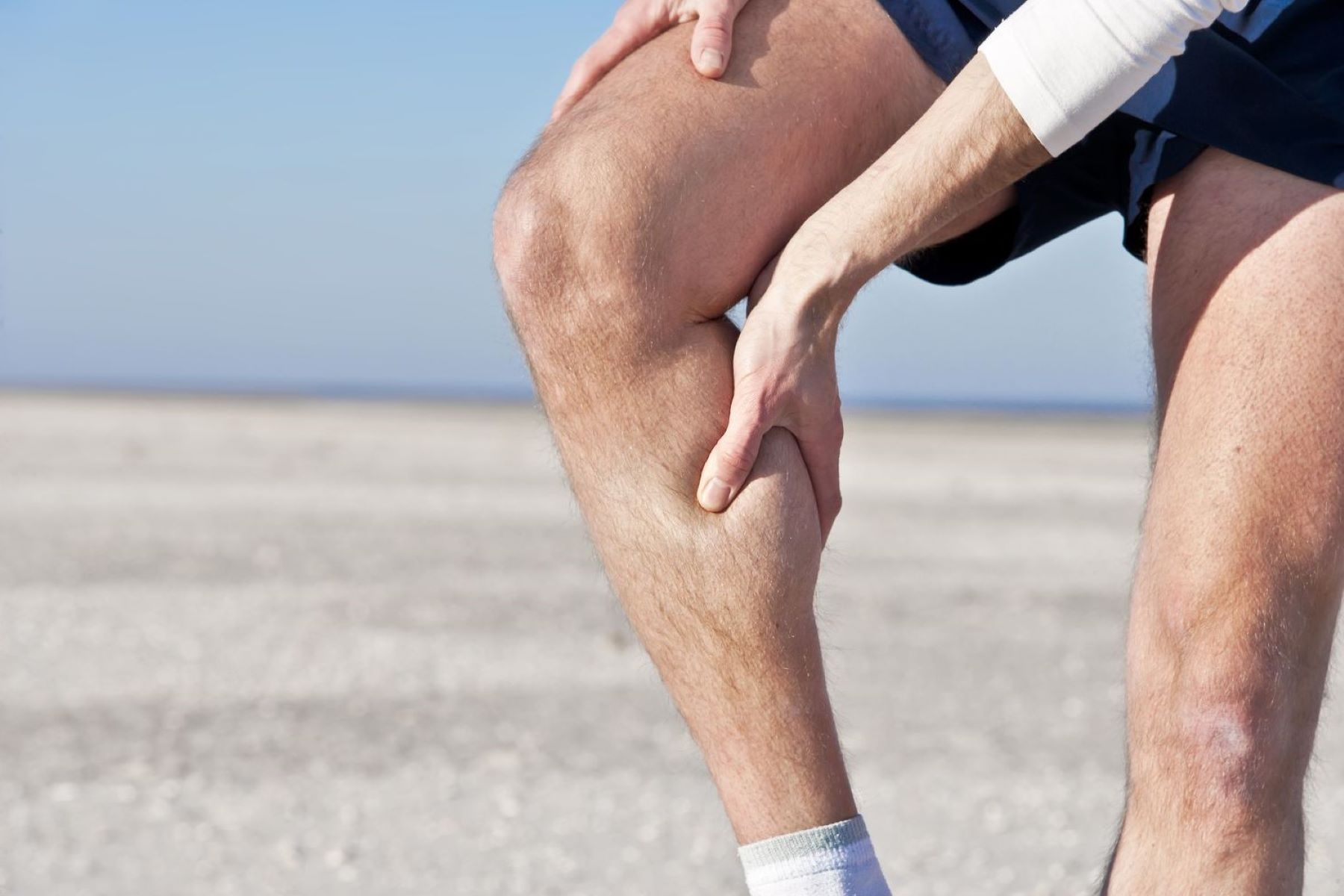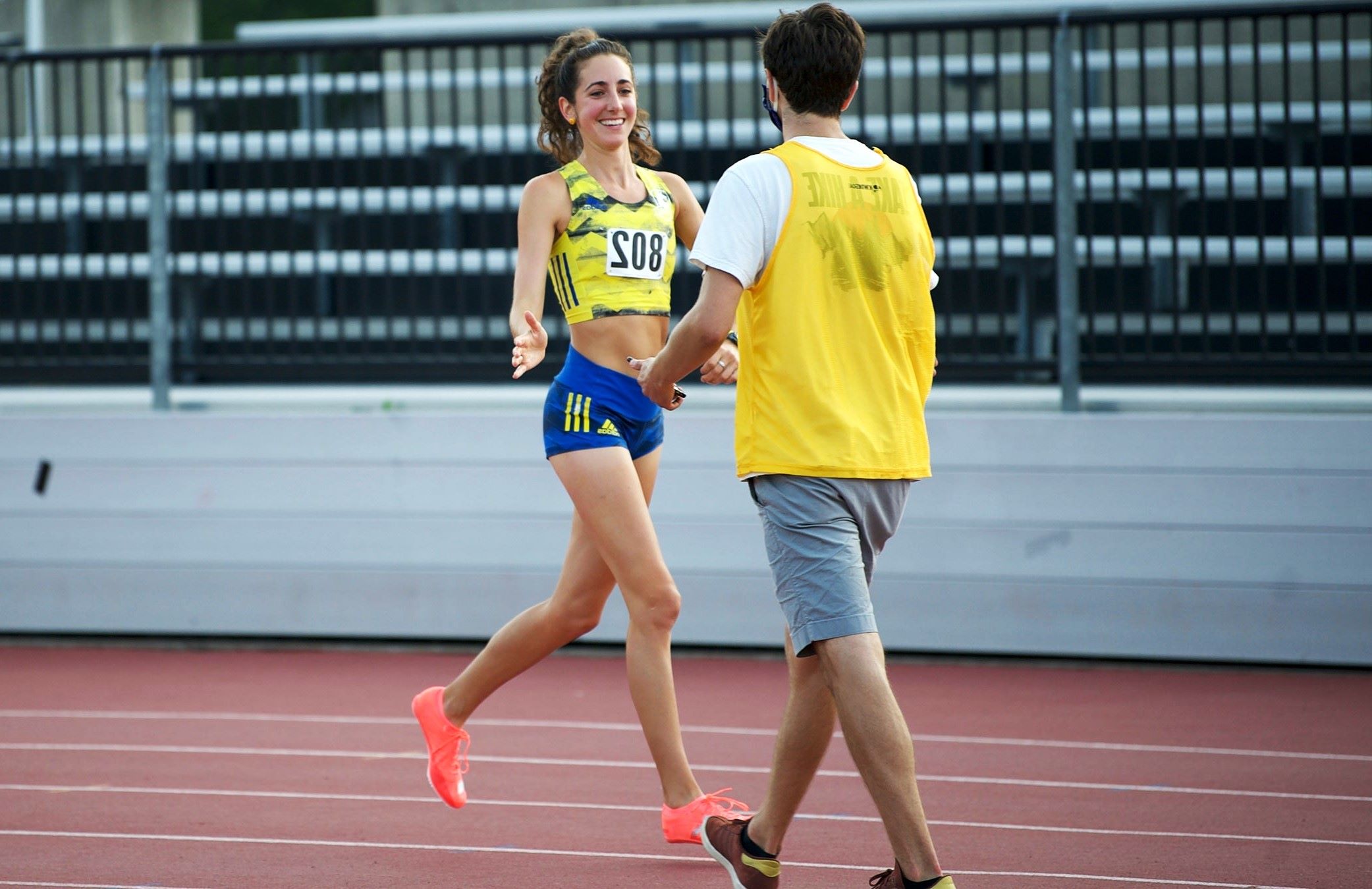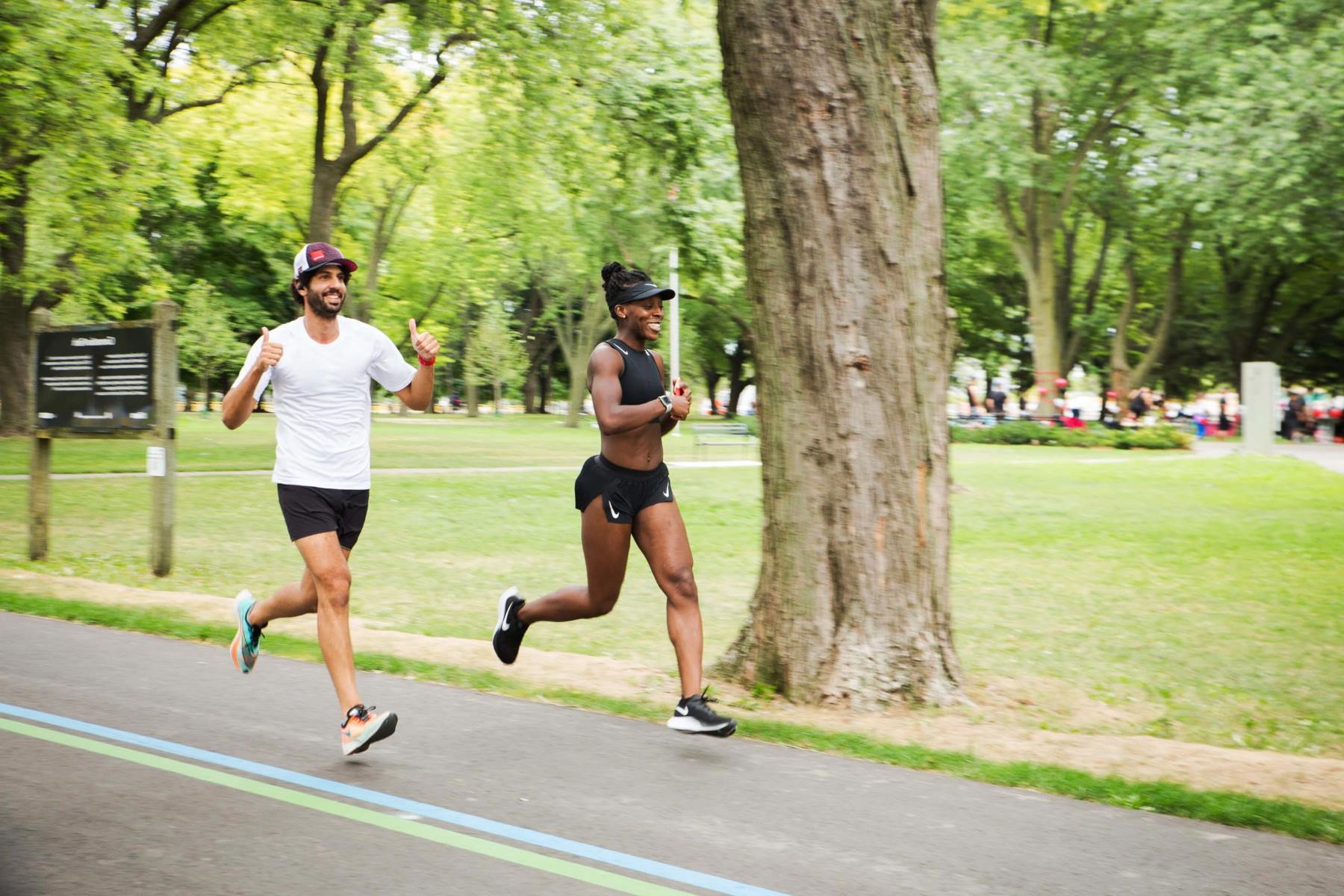Home>Health & Nutrition>Injury Prevention>Running With Arthritis: A Comprehensive Guide


Injury Prevention
Running With Arthritis: A Comprehensive Guide
Published: February 22, 2024
Learn how to prevent injuries while running with arthritis with our comprehensive guide. Discover effective strategies to protect your joints and stay active.
(Many of the links in this article redirect to a specific reviewed product. Your purchase of these products through affiliate links helps to generate commission for Therunningadvisor.com, at no extra cost. Learn more)
Table of Contents
- Understanding Arthritis and its Impact on Running
- Managing Arthritis Symptoms for Runners
- Choosing the Right Running Shoes for Arthritic Feet
- Warm-Up and Cool-Down Exercises for Arthritic Runners
- Strength Training and Stretching for Arthritic Runners
- Nutrition and Hydration Tips for Arthritic Runners
- Tips for Running with Arthritis: Dos and Don'ts
- Seeking Professional Help: Working with a Physical Therapist or Trainer
Understanding Arthritis and its Impact on Running
Arthritis, a condition characterized by inflammation and stiffness in the joints, can significantly impact runners. The two most common types of arthritis that affect runners are osteoarthritis and rheumatoid arthritis. Osteoarthritis, often associated with aging and wear and tear on the joints, can cause pain and stiffness, particularly in weight-bearing joints such as the knees and hips. On the other hand, rheumatoid arthritis is an autoimmune condition that leads to joint inflammation, pain, and potential deformity.
When it comes to running, arthritis can pose several challenges. The repetitive impact and stress placed on the joints during running can exacerbate arthritis symptoms, leading to increased pain and discomfort. Additionally, the reduced flexibility and range of motion in arthritic joints can hinder a runner's performance and increase the risk of injury.
Understanding the specific impact of arthritis on running is crucial for developing effective injury prevention strategies and training modifications. Runners with arthritis may experience limitations in their ability to maintain a consistent running routine, as flare-ups of pain and stiffness can disrupt training schedules and race preparation. Moreover, the psychological impact of arthritis, including the frustration and disappointment of not being able to run at previous levels, should not be overlooked.
It's important for runners with arthritis to recognize the signs of joint inflammation and to differentiate between normal post-exercise soreness and arthritis-related pain. By understanding the unique challenges posed by arthritis, runners can take proactive steps to manage their condition and continue pursuing their passion for running.
In the following sections, we will explore strategies for managing arthritis symptoms, selecting appropriate running shoes, incorporating warm-up and cool-down exercises, engaging in strength training and stretching, optimizing nutrition and hydration, and adhering to essential dos and don'ts for running with arthritis. Additionally, we will emphasize the value of seeking professional guidance from physical therapists or trainers who specialize in working with individuals with arthritis.
Read more: A Comprehensive Guide To Running Nutrition
Managing Arthritis Symptoms for Runners
Managing arthritis symptoms is a critical aspect of enabling runners to continue pursuing their passion while minimizing discomfort and potential joint damage. For runners with arthritis, proactive symptom management can make a significant difference in their ability to maintain a consistent training regimen and participate in races. Here are several strategies to effectively manage arthritis symptoms for runners:
Listen to Your Body
Runners with arthritis must pay close attention to their bodies and be attuned to any signals of pain, stiffness, or inflammation. It's essential to differentiate between normal exercise-related discomfort and arthritis symptoms. By recognizing the early signs of joint inflammation, runners can take appropriate measures to prevent exacerbation of their condition.
Modify Training Intensity and Frequency
Adapting the intensity and frequency of training sessions can help mitigate the impact of arthritis on the joints. Incorporating rest days between runs and adjusting the duration and intensity of workouts can reduce the strain on arthritic joints while still allowing for consistent training progress.
Cross-Training and Low-Impact Activities
Engaging in cross-training activities such as swimming, cycling, or yoga can provide valuable alternatives to running. These low-impact exercises can help maintain cardiovascular fitness and muscular strength while minimizing stress on arthritic joints. By diversifying their exercise routines, runners can reduce the repetitive impact on specific joints and promote overall joint health.
Utilize Pain Management Techniques
Exploring various pain management techniques, such as applying ice or heat to affected joints, using supportive braces or compression sleeves, and incorporating gentle massage or acupuncture, can help alleviate arthritis-related discomfort. Additionally, over-the-counter or prescribed anti-inflammatory medications may be utilized under the guidance of a healthcare professional to manage pain and inflammation.
Maintain a Healthy Body Weight
Maintaining a healthy body weight is crucial for runners with arthritis, as excess weight can exacerbate joint strain and discomfort. By adopting a balanced diet and incorporating regular exercise, runners can manage their weight effectively, reducing the burden on arthritic joints during running activities.
Prioritize Adequate Rest and Recovery
Ensuring adequate rest and recovery periods between training sessions is essential for runners with arthritis. Quality sleep, proper hydration, and mindful recovery practices can support joint health and overall well-being, allowing runners to manage their arthritis symptoms more effectively.
By implementing these strategies and maintaining open communication with healthcare professionals, runners can effectively manage their arthritis symptoms and continue to pursue their passion for running with greater comfort and confidence.
Choosing the Right Running Shoes for Arthritic Feet
Selecting the appropriate running shoes is a crucial consideration for runners with arthritis, as the right footwear can significantly impact comfort, support, and overall joint health. When it comes to managing arthritis symptoms, particularly in the feet and lower extremities, the choice of running shoes plays a pivotal role in minimizing discomfort and reducing the risk of exacerbating arthritic conditions.
Understanding Arthritic Foot Pain
Arthritic feet often experience pain, stiffness, and reduced flexibility, which can be exacerbated by the repetitive impact and pressure exerted during running. The structural changes in the feet associated with arthritis, such as joint deformities and decreased arch support, necessitate careful attention to the features of running shoes to ensure optimal comfort and support.
Key Considerations for Arthritic-Friendly Running Shoes
Cushioning and Shock Absorption
For runners with arthritic feet, adequate cushioning and shock absorption are essential features to mitigate the impact on joints and reduce discomfort. Shoes with ample cushioning in the midsole and heel areas can help absorb the forces generated during running, minimizing stress on arthritic joints and promoting a more comfortable running experience.
Support and Stability
Choosing running shoes with excellent support and stability is crucial for arthritic feet. Features such as reinforced arch support, firm heel counters, and structured midsole support can enhance stability and reduce excessive motion, providing a more secure and supportive platform for arthritic feet during running activities.
Flexibility and Comfort
Opting for running shoes that offer flexibility without compromising support is vital for arthritic feet. Shoes with a balance of flexibility and structure can accommodate the unique biomechanical needs of arthritic feet, allowing for natural foot movement while providing essential support and comfort.
Proper Fit and Sizing
Ensuring the proper fit and sizing of running shoes is paramount for runners with arthritis. Shoes that are too tight can exacerbate discomfort and restrict joint mobility, while overly loose shoes can compromise stability and support. Seeking professional fitting assistance and prioritizing ample toe room and a secure heel fit can optimize the comfort and functionality of running shoes for arthritic feet.
Specialized Footwear Options
In addition to traditional running shoes, runners with arthritis may benefit from exploring specialized footwear options designed specifically for individuals with arthritic conditions. Orthopedic or orthotic shoes, which offer customized support and cushioning, can address the unique needs of arthritic feet, providing enhanced comfort and stability during running activities.
Seeking Professional Guidance
Consulting with a podiatrist or footwear specialist can provide valuable insights and recommendations for selecting the most suitable running shoes for arthritic feet. These professionals can assess the specific biomechanical considerations and foot characteristics of individuals with arthritis, offering personalized guidance to optimize footwear selection and promote overall foot health.
By prioritizing the features of cushioning, support, stability, flexibility, and proper fit, runners with arthritis can make informed choices when selecting running shoes, ultimately enhancing comfort, minimizing discomfort, and supporting their ongoing pursuit of running with greater ease and confidence.
Warm-Up and Cool-Down Exercises for Arthritic Runners
Warm-up and cool-down exercises are essential components of a comprehensive running routine, particularly for arthritic runners. These exercises play a crucial role in preparing the body for physical activity, minimizing the risk of injury, and promoting optimal recovery post-run. For individuals with arthritis, incorporating tailored warm-up and cool-down routines can help alleviate stiffness, enhance joint flexibility, and mitigate the impact of running on arthritic joints.
Warm-Up Exercises
Joint Mobilization Movements
Gentle joint mobilization exercises, such as ankle circles, knee lifts, and hip rotations, can help improve joint mobility and reduce stiffness before running. These low-impact movements promote synovial fluid circulation within the joints, enhancing lubrication and reducing discomfort associated with arthritic stiffness.
Dynamic Stretching
Engaging in dynamic stretching exercises, such as leg swings, walking lunges, and high knee marches, can effectively prepare the muscles and connective tissues for the demands of running. Dynamic stretching promotes increased blood flow to the muscles, enhancing flexibility and range of motion while minimizing the risk of strain during the run.
Gradual Cardiovascular Activation
Incorporating a gradual cardiovascular activation phase, such as brisk walking or light jogging, can gradually elevate heart rate and body temperature, preparing the cardiovascular system for the upcoming run. This gradual progression allows arthritic runners to acclimate to the physical demands of running while minimizing stress on the joints.
Cool-Down Exercises
Static Stretching
Following a run, arthritic runners can benefit from incorporating static stretching exercises to promote muscle relaxation and alleviate post-run tension. Targeted stretches for the calves, hamstrings, quadriceps, and hip flexors can help reduce muscle tightness and enhance overall flexibility, contributing to improved joint comfort and mobility.
Foam Rolling and Self-Myofascial Release
Utilizing a foam roller or self-myofascial release techniques can aid in releasing muscular tension and addressing trigger points that may have developed during the run. By targeting specific muscle groups, arthritic runners can alleviate post-run discomfort and support muscle recovery, enhancing overall comfort and mobility.
Controlled Breathing and Relaxation
Incorporating controlled breathing exercises and relaxation techniques during the cool-down phase can promote mental and physical relaxation, supporting overall stress reduction and recovery. Mindful breathing and relaxation practices can help arthritic runners manage post-run discomfort and enhance their overall well-being.
By integrating these warm-up and cool-down exercises into their running routine, arthritic runners can optimize joint mobility, minimize discomfort, and promote overall well-being. These exercises not only support injury prevention and recovery but also contribute to a more enjoyable and sustainable running experience for individuals managing arthritis.
Strength Training and Stretching for Arthritic Runners
Strength training and stretching are integral components of a well-rounded exercise regimen for arthritic runners. These practices not only contribute to improved muscular strength and flexibility but also play a crucial role in supporting joint health and minimizing the impact of arthritis on running performance. For individuals managing arthritis, incorporating tailored strength training and stretching routines can help alleviate discomfort, enhance joint stability, and promote overall physical resilience.
Importance of Strength Training
Strength training exercises, when adapted to accommodate the specific needs and limitations of arthritic runners, can offer numerous benefits. By targeting key muscle groups, strength training helps support and stabilize arthritic joints, reducing the risk of injury and enhancing overall functional capacity. Additionally, strengthening the muscles surrounding arthritic joints can help alleviate stress on the affected areas, contributing to improved joint comfort and mobility during running activities.
Tailored Strength Training Exercises
For arthritic runners, focusing on low-impact and joint-friendly strength training exercises is essential. Incorporating exercises that emphasize controlled movements and proper form, such as bodyweight squats, leg lifts, and resistance band exercises, can effectively strengthen the muscles without placing excessive strain on arthritic joints. Additionally, exercises that target the core muscles, including the abdominals and lower back, can enhance overall stability and support for the spine and pelvis, contributing to improved running mechanics and reduced discomfort.
Benefits of Stretching
Stretching plays a pivotal role in promoting joint flexibility, reducing muscle tension, and enhancing overall range of motion for arthritic runners. By incorporating targeted stretching exercises into their routine, individuals with arthritis can alleviate stiffness, improve joint mobility, and minimize the risk of musculoskeletal imbalances that may contribute to discomfort during running. Furthermore, regular stretching can support injury prevention and contribute to a more fluid and comfortable running experience.
Tailored Stretching Regimen
Arthritic runners can benefit from incorporating dynamic and static stretching exercises that specifically address the areas of tightness and reduced flexibility associated with their condition. Dynamic stretching, which involves controlled movements that take joints and muscles through a full range of motion, can help prepare the body for running activities while minimizing stiffness and discomfort. Additionally, static stretching exercises targeting the major muscle groups, such as the quadriceps, hamstrings, and calves, can promote enhanced flexibility and joint comfort, supporting a more comfortable and sustainable running experience.
By integrating tailored strength training and stretching exercises into their routine, arthritic runners can enhance muscular strength, joint stability, and overall flexibility, contributing to improved comfort and resilience during running activities. These practices not only support the management of arthritis symptoms but also promote a more enjoyable and sustainable running experience for individuals navigating the challenges of arthritis.
Nutrition and Hydration Tips for Arthritic Runners
Proper nutrition and hydration play a vital role in supporting the overall well-being and performance of arthritic runners. The dietary choices and hydration practices of individuals managing arthritis can significantly impact their joint health, energy levels, and recovery capacity. By prioritizing nutrient-dense foods and maintaining optimal hydration, arthritic runners can effectively manage their condition and support their ongoing pursuit of running with greater comfort and vitality.
Balanced Diet for Joint Health
Arthritic runners can benefit from adopting a balanced and diverse diet that emphasizes whole foods rich in essential nutrients. Incorporating a variety of fruits, vegetables, lean proteins, whole grains, and healthy fats can provide the necessary vitamins, minerals, and antioxidants to support joint health and overall well-being. Foods high in omega-3 fatty acids, such as salmon, chia seeds, and walnuts, can help reduce inflammation and alleviate arthritis-related discomfort, contributing to improved joint function and mobility.
Anti-Inflammatory Foods
Integrating anti-inflammatory foods into the diet can offer valuable support for arthritic runners. Consuming foods with natural anti-inflammatory properties, including turmeric, ginger, berries, and leafy greens, can help mitigate the systemic inflammation associated with arthritis, potentially reducing joint pain and stiffness. Additionally, incorporating spices and herbs with anti-inflammatory properties into meal preparations can enhance the overall nutritional value of the diet while supporting joint comfort and resilience.
Hydration Strategies
Maintaining optimal hydration is essential for arthritic runners, as adequate fluid intake supports joint lubrication, temperature regulation, and overall physical performance. Hydration strategies should prioritize regular water consumption throughout the day, particularly before, during, and after running activities. Additionally, incorporating hydrating foods such as water-rich fruits, vegetables, and herbal teas can contribute to overall fluid balance and support joint comfort during exercise.
Read more: A Comprehensive Guide To Running Easy Miles
Nutrient Timing and Recovery
Strategic nutrient timing and post-exercise recovery practices are crucial for arthritic runners to support muscle repair, joint recovery, and overall energy replenishment. Consuming a balanced snack or meal containing protein and carbohydrates within the post-exercise window can facilitate muscle recovery and support joint health. Additionally, incorporating foods rich in antioxidants, such as colorful fruits and vegetables, can aid in reducing exercise-induced oxidative stress and promoting overall recovery for arthritic runners.
Professional Guidance and Individualized Approach
Seeking guidance from a registered dietitian or nutrition specialist can provide arthritic runners with personalized recommendations tailored to their specific dietary needs and goals. Professional support can help individuals navigate dietary considerations related to arthritis management, optimize nutrient intake, and develop sustainable eating habits that support their running endeavors. By collaborating with nutrition experts, arthritic runners can gain valuable insights and strategies to enhance their overall nutrition and hydration practices.
By integrating these nutrition and hydration tips into their lifestyle, arthritic runners can optimize their dietary choices and hydration practices to support joint health, energy levels, and overall well-being. These strategies not only contribute to the management of arthritis symptoms but also promote a more resilient, comfortable, and enjoyable running experience for individuals navigating the challenges of arthritis.
Tips for Running with Arthritis: Dos and Don'ts
When it comes to running with arthritis, incorporating specific dos and avoiding certain don'ts can significantly impact the comfort, safety, and sustainability of the running experience for individuals managing this condition. By adhering to these guidelines, arthritic runners can optimize their training approach, minimize discomfort, and support their ongoing pursuit of running with greater confidence and resilience.
The Dos
Do Prioritize Proper Warm-Up and Cool-Down Routines
Engaging in tailored warm-up exercises and incorporating thorough cool-down routines can help arthritic runners prepare their bodies for the demands of running and promote optimal recovery post-run. By prioritizing joint mobilization movements, dynamic stretching, and controlled breathing during warm-up and cool-down phases, runners can enhance joint mobility, minimize stiffness, and reduce the risk of injury.
Do Listen to Your Body
Paying close attention to the signals of pain, discomfort, and fatigue from the body is crucial for arthritic runners. Recognizing the difference between normal exercise-related sensations and arthritis-related symptoms can guide runners in adjusting their training intensity, duration, and frequency to accommodate their individual needs and limitations.
Do Seek Professional Guidance
Consulting with healthcare professionals, including rheumatologists, physical therapists, and running specialists, can provide valuable insights and personalized recommendations for managing arthritis symptoms while running. Professional guidance can help arthritic runners develop tailored training plans, optimize footwear selection, and address specific concerns related to joint health and injury prevention.
Do Incorporate Cross-Training and Low-Impact Activities
Diversifying the exercise routine with low-impact activities such as swimming, cycling, and yoga can offer valuable alternatives to running while supporting cardiovascular fitness and muscular strength. By incorporating cross-training activities, arthritic runners can reduce the repetitive impact on specific joints, promote overall joint health, and minimize the risk of overuse injuries.
Do Maintain Open Communication with Healthcare Providers
Establishing open communication with healthcare providers regarding arthritis management and running activities is essential. By keeping healthcare professionals informed about their running regimen and any changes in arthritis symptoms, runners can receive ongoing support, guidance, and adjustments to their management strategies as needed.
The Don'ts
Don't Ignore Persistent Joint Discomfort
Ignoring persistent joint discomfort or escalating pain during running activities can exacerbate arthritis symptoms and increase the risk of injury. It's important for arthritic runners to address any prolonged or severe discomfort promptly, adjusting their training or seeking professional evaluation to prevent potential aggravation of their condition.
Don't Overlook Proper Footwear Selection
Neglecting the importance of selecting appropriate running shoes for arthritic feet can lead to increased discomfort and potential joint strain. Arthritic runners should avoid wearing worn-out or unsupportive footwear, as well as shoes that do not accommodate their specific foot characteristics and biomechanical needs.
Don't Push Through Severe Fatigue or Joint Inflammation
Pushing through severe fatigue or acute joint inflammation during running can compromise joint health and lead to prolonged recovery periods. Arthritic runners should be mindful of their body's signals and avoid pushing beyond their limits, particularly during flare-ups of arthritis-related symptoms.
Don't Neglect Recovery and Rest Days
Neglecting adequate rest and recovery periods between running sessions can hinder the body's ability to repair and adapt, potentially exacerbating arthritis symptoms and increasing the risk of overuse injuries. Arthritic runners should prioritize rest days and incorporate active recovery practices to support joint health and overall well-being.
Don't Hesitate to Modify Training Plans as Needed
Hesitating to modify training plans in response to changes in arthritis symptoms or overall well-being can impede progress and compromise joint comfort. Arthritic runners should be proactive in adjusting their training intensity, duration, and frequency based on their individual needs and the fluctuating nature of arthritis-related symptoms.
By embracing these dos and avoiding the don'ts, arthritic runners can navigate the challenges of running with greater awareness, adaptability, and consideration for their joint health. These guidelines not only support injury prevention and symptom management but also contribute to a more sustainable, enjoyable, and empowering running experience for individuals managing arthritis.
Seeking Professional Help: Working with a Physical Therapist or Trainer
Seeking professional guidance from a physical therapist or certified trainer can be instrumental for arthritic runners in optimizing their training approach, managing symptoms, and promoting overall joint health. These healthcare professionals possess specialized knowledge and expertise in addressing the unique needs and challenges of individuals with arthritis, offering tailored strategies to support safe and effective running practices.
Physical therapists play a pivotal role in assessing the biomechanical considerations and joint health of arthritic runners. Through comprehensive evaluations, physical therapists can identify specific areas of concern, such as joint stiffness, muscle imbalances, and gait abnormalities, that may impact running performance and contribute to discomfort. By conducting thorough assessments, physical therapists can develop personalized exercise regimens and mobility-enhancing interventions to address the individual needs of arthritic runners, promoting improved joint function and resilience.
Furthermore, physical therapists can provide guidance on injury prevention strategies, including proper warm-up and cool-down routines, targeted stretching exercises, and strength training protocols tailored to the unique needs of arthritic runners. By collaborating with physical therapists, individuals managing arthritis can gain valuable insights into optimizing their running mechanics, reducing the risk of overuse injuries, and enhancing overall joint comfort during running activities.
Certified trainers with expertise in working with individuals with arthritis can offer valuable support in developing customized training plans that accommodate the specific needs and limitations of arthritic runners. These trainers can provide guidance on exercise modifications, intensity adjustments, and cross-training recommendations to diversify the training regimen and minimize the impact on arthritic joints. Additionally, certified trainers can offer valuable insights into proper footwear selection, running mechanics, and pacing strategies to support the comfort and safety of arthritic runners during their training and race participation.
Collaborating with a physical therapist or certified trainer can empower arthritic runners to navigate the complexities of managing their condition while pursuing their passion for running. By leveraging the expertise and support of these professionals, individuals with arthritis can optimize their training approach, minimize discomfort, and foster a more sustainable and enjoyable running experience. The guidance provided by physical therapists and certified trainers can contribute to enhanced joint health, injury prevention, and overall well-being for arthritic runners, supporting their ongoing pursuit of a fulfilling and active lifestyle.


